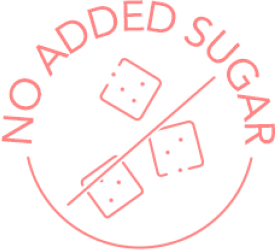The Complete Guide to Understanding Hair Porosity
We are often so caught up in dealing with hair loss and dandruff that we believe those are the only haircare concerns one must know. However, the reality is that our hair has various characteristics and qualities depending on its texture and type, hair porosity being one of them.
If you have never heard the term "hair porosity" and are wondering what it is, you are not alone. Hair porosity is an important yet overlooked aspect of caring for your overall hair health. Even though it is a natural concept, understanding hair porosity can be confusing with an overload of information. Through this blog, we will discover the meaning of porosity and how learning yours can help guide you towards your best hair yet.

What is Hair Porosity?
Hair porosity refers to the ability of your hair to absorb and retain moisture. It is an indicator of how well oils and water can pass in and out of the outermost layer of the hair shaft, the cuticle. It is essential to know that almost every hair strand is porous to some extent, but the degree of porosity can significantly vary from one person to another.
To understand the concept of hair porosity in-depth, let's learn about the structure of hair, which consists of 3 layers:
- The cuticle: This is the strong, protective outermost layer of your hair, consisting of overlapping scales, much like roof shingles.
- The cortex: This layer is the densest part of your hair, containing fibrous proteins and the pigment responsible for your hair colour.
- The medulla: The innermost part of the hair shaft, which is soft and central.
Water, oils, and other hydrating products must pass through the cuticle and reach the cortex for hair to remain healthy and well-moisturised. However, when the cuticles are too tightly arranged, it becomes challenging for moisture and oils to penetrate the hair.
This makes it difficult for your hair to receive the hydration it needs. On the other hand, if the cuticles are too widely spaced, your hair will struggle to retain moisture, making it harder to stay hydrated.
Depending on your hair, porosity can be divided into three categories: Low, Medium, and High.
Factors that Influence Hair Porosity
- Genetics
- Chemical treatments like hair colouring
- Ageing
- Heat styling (frequent use of heat tools like curling irons, hair dryers or straighteners)
- Exposure to extreme heat or humidity
- Diet and lifestyle
- Hair care practices (the hair care products you use, how you wash your hair and take care of it).
The Three Types of Hair Porosity and How to Care for It
- Low Porosity Hair has tightly packed cuticles that lie flat, making it difficult for moisture and other hair care products to penetrate the hair shaft. Even though your hair may appear silky and smooth, keeping it adequately hydrated will be challenging, as water, moisture, and hair care products cannot penetrate your hair shaft. Your hair may also take time to air dry naturally.
-
Treatment:
- Use Lightweight Products: Opt for lightweight, water-based products that won't sit on the surface of your hair. Avoid heavy oils that can weigh your hair down.
- Warm Water Rinse: Rinse your hair with warm water before applying conditioners or treatments. The warmth can help lift the cuticles slightly, allowing better penetration of moisture and products.
- Clarifying Shampoo: Use a clarifying shampoo occasionally to remove buildup from hair products that can further block moisture absorption. Avoid using protein treatments, which can make your hair stiff and dry.
- Medium Porosity Hair has a balanced cuticle structure that allows moisture to be absorbed and retained efficiently. The cuticles are slightly raised, enabling moisture and hair care products to penetrate the hair shaft without much difficulty. Medium hair porosity strikes a balance between high and low porosity. Individuals with medium hair porosity need to maintain balance through proper hair care.
-
Treatment:
- Regular Conditioning: Use regular and deep conditioners to moisturise your hair. This helps maintain the hair's natural balance and prevents dryness or damage.
- Regular Trims: Keep your hair healthy and free from split ends by getting regular trims.
- Balanced Hair Products: Look for shampoos, conditioners, and styling products designed for normal hair types and offer a good balance of moisture and protein.
- High Porosity Hair has cuticles that are raised or have gaps, making it easier for moisture and products to enter the hair shaft. However, this also means that moisture escapes just as quickly, leading to dryness and frizz.
-
Treatment:
- Moisturise Frequently: High porosity hair needs regular and intense moisturising. For ample hydration, use leave-in conditioners, hair masks, and deep conditioners.
- Use Sealing Products: Use sealing products to lock in the moisture. Natural oils like coconut, olive, and shea butter are excellent for sealing moisture into high porosity hair.
- Limit Heat Styling: Avoid excessive use of heat styling tools, as they can further damage the hair, increase porosity and cause frizz.
How to Know Your Hair Porosity?
You can know about your hair porosity by doing a simple and quick at-home test called the Float Test. Here's how you can do it:

Step 2: Take a clean, dry strand of hair from your comb or brush.
Step 3: Fill a clear glass with water and place the hair strand in the glass.
Step 4: Observe the results:
- Low Porosity: If the hair strand floats on the top of the glass surface for an extended period, it indicates low porosity.
- Medium Porosity: If the hair strand floats in the middle of the glass, it indicates medium porosity.
- High Porosity: If the hair strand sinks quickly to the bottom of the glass, it indicates high porosity.






